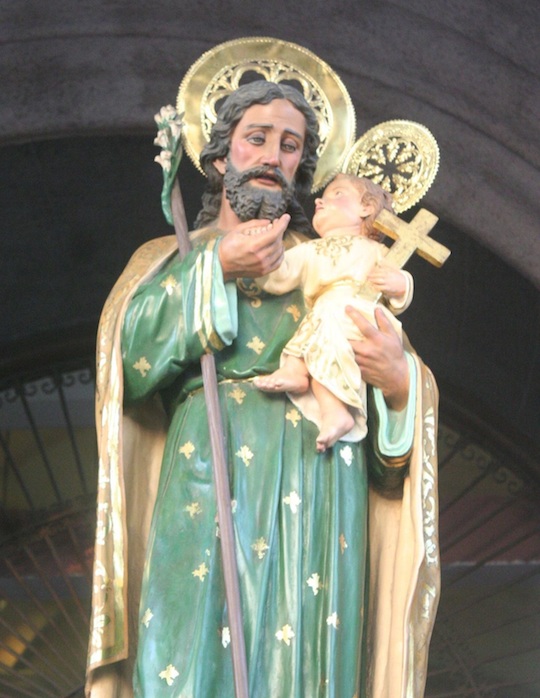
The corner for decades, the northeast corner of Telegraph and Haste was home to the Berkeley Inn, which I glorified in this post.

It started life as an almost-elegant apartment house. It was advertised as having “100 rooms equipped in the most complete modern manner, beautifully furnished.” By the time fires ripped through it in the 1980s it was a more-or-less seedy flophouse/SRO. I am really proud of my prose describing the hotel in the above-reference post. With a little imagination you could say it was our Chelsea Hotel.

The Inn was demolished in the 1990s after two fires. A few years later Ken Sarachan bought the lot.

This is the first drawing that I saw of the plans for Telegraph-Haste corner. They were published in 2012.

Our architectural historian laureate Daniela Thompson explained to me: “Ken’s idea was El Jardin, designed by Kirk Peterson. Ken sold the property and the project entitlements to West Builders, who hired the architectural firm that modified Kirk’s design, and who have renamed the project and built it.”
The plans had evolved to this by 2018 when construction began.
The building is known as the Enclave Dormitories. It has many other nicknames and descriptors – a cave dwelling, a wizard’s house, a Moorish palace, and La Fortalezza. John King, the urban design critic at the San Francisco Chronicle, tweeted that the building appeared as a “Moorish-Tudor fever dream.”
Let’s see what it looked like just before the Corona Virus changed life as we know it.










What do I think of the building?
Before my opinion, three points of reference, okay?
First – I have no beef with Ken Sarachan. He is a controversial a figure in Berkeley, yes. Neither the fact that this is his project nor the fact that it comes after decades of battles with the City over the site drives me to dislike the design.


Second, I am a big fan of Normandy Village on Arch Street, which I posted about here. I also love bungalow courts, many of which are period revival architecture. Best of all, the Fox Brothers. All of these might have faced the same criticism that the Enclave Apartments face.
Third, let’s look a few other recent apartment buildings built on Telegraph.






At an LGBT campaign fundraising event in New York City on September 9, 2016, Hillary Clinton said this of Donald Trump supporters: ““You know, to just be grossly generalistic, you could put half of Trump’s supporters into what I call the basket of deplorables. Right?” Clinton said. “The racist, sexist, homophobic, xenophobic, Islamaphobic—you name it. And unfortunately there are people like that. And he has lifted them up.” Her complete remarks may be found here.

I mention this because of her phrase “basket of deplorables,” which as far as I can tell is a phrase that she (/her speechwriters) coined. It landed Clinton in a ton of trouble but I find it brilliant.
I would use the phrase “basket of deplorables” to describe most of what is being built in Berkeley – or was being built before the catastrophic virus-driven economic collapse. I guess that there are architects who know much more than I do who would defend some of these designs, but for me they bring to mind Tom Wolfe’s in From Bauhaus to Our House wondering what the second choice was if these were the first choice.
Anyway, with those points of reference, what is my opinion?
Kirk Peterson was the original architect for the project. He researched various influences for the project, including cave dwellings in the South of France, the architecture of Yemen, the Alhambra, Baroque churches in provincial Italy and the work of Julia Morgan. He hates the final design. Berkeleyside quotes him as saying ““I wanted to make art. I wanted to do a correct, authentic, historicist building. Now it looks like crap. It looks god-awful. I’m not even sure if the cliff is Disneyland quality. It looks really fake. It looks really phony,”
Peterson designed the Bachenheimer Building on University at Shattauck, and it’s okay by me.

The phrase “agree to disagree” appeared in print in its modern meaning in 1770 when, at the death of George Whitefield (a cleric and evangelist who was one of the founders of Methodism), John Wesley (a leader the Methodism revival movement within the Church of England( .wrote a memorial sermon which acknowledged but downplayed the two men’s doctrinal differences: “There are many doctrines of a less essential nature … In these we may think and let think; we may ‘agree to disagree.'”
I have no beef with Kirk Peterson or any of those who have been horrified by what Sarachan has built, but I don’t agree.
I think that what Sarachan envisioned for the Berkeley Inn site is a Good Thing For Berkeley. It is Not What Is Expected. I like that. Yeah, maybe you start looking for the roller coaster, but – if you disregard the Sarachesn-is-a-Monster drama and compare/contrast with everything else being built – I like it.

I really like it. Cue Sancho Panza singing “I Like Him” from The Man of La Mancha. I hear this music and – FLASHBACK – I am sitting in the Shubert Theater in December 1968 or January 1969 seeing the performance. I believe that Jose Ferrer played Don Quixote and that Tony Martinez played Sancho Panza. I loved the performance and felt very grown up.
I digress, and about to digress a lot more, but for the record – I like The Enclave. I am glad it is there. We are better for it.
I went to my friend’s quarters to get his read on the draft post. Because I am on thin ice when I write about controversial figures such as Ken Sarachan, I especially wanted his take.
Not so fast. He had something to show me and something to tell me.

My friend showed me this photograph on his iPhone. He said, “I was out for a walk and saw this plant. I took the photo and asked my Knowledgeable Gardener Friend what it is and they said ‘Rose of Sharon hibiscus.’
“I checked. Yes, indeed, Rose of Sharon is a common name that has been applied to several different species of flowering plants, including the Hibiscus syriacus. Syriacus (Latin for ‘Syrian’) because it was collected from gardens in Syria. it is a hardy hibiscus for late-season blooms. On the East Coast it is able to offer white, red, lavender, or light blue blooms when many flowering shrubs have long since ceased blooming. I know that you know, but late summer flowering shrubs can help gardeners manage the sequence of bloom in their landscapes.”
As the recently retired radio genius Gary Radnich would say about my friend’s horticultural dissertation, “Good knowledge.” In college at UNLV, Radnich drove a purple El Dorado Cadillac, known as the reduplicative “Raddy’s Caddy.” That is good knowledge.
“Rose of Sharon” is a magical name for me. Rose of Sharon,, contracted to Rosasharn, is Tom Joad’s young sister in Grapes of Wrath.. She is married to Connie Rivers and is “nesting’ with Connie’s folks.

Dorris Bowdon played the role of Rosasharn in the 1940 movie version of Grapes of Wrath. She is best known for that role. I saw this movie on June 15, 1968, my first night with the United Farm Workers in Delano. It’s all about me!

The term “rose of Sharon”is found in the Song of Solomen, Chapter 2, Verse 1: “I am the rose of Sharon, and the lily of the valleys.” Biblical scholars can debate the translation to death – should it be “flower of the field,” or a lily or a jonquil or a crocus? I don’t need the level of precision that they are working towards. I will call the plant my friend saw “Rose of Sharon,” which is oh so much nicer than the name that I would have used, which is “rose mallow.”
In Italy, hibiscus syriacus is known as St. Joseph’s rod due to corruption of an account in the Protoevangelium of James.

The protoevangelium presents itself as written by a source of moral and ecclesiastical authority, ending with the declaration: “I, James, wrote this history in Jerusalem.” The purported author is thus James, the brother of Jesus. However, textual scholarship has indicated that the text is a work of pseudepigrapha, a common literary style to this period. It was likely composed some time in the mid-second century
Pseudepigrapha are falsely attributed works, texts whose claimed author is not the true author, or a work whose real author attributed it to a figure of the past.
Pseudo-Dionysius the Areopagite was a Christian theologian and philosopher of the late 5th to early 6th century, who wrote a set of works known as the Corpus Areopagiticum or Corpus Dionysiacum.

He pseudonymously and falsely identifies himself in the corpus as “Dionysios”, portraying himself as Dionysius the Areopagite (a member of the ancient-Athenian conciliary court of the Areopagus), the Athenian convert of Paul the Apostle mentioned in Acts 17:34 (“Howbeit certain men clave unto him, and believed: among the which was Dionysius the Areopagite, and a woman named Damaris, and others with them.”)
NOTES: (1) “Howbeit” is archaic, meaning the same as nevertheless or however. (2) “Clave” is the archaic form of the past tense of “cleave.”

(3) maris is a saint in the Greek Orthodox Church. Women were usually not present in Areopagus meetings, Damaris has traditionally been assumed to have been a hetaera (courtesan, high-status prostitute)

In the apocryphal book of James, when Mary’s parents Joachim and Anna decide who is to marry Mary, a dove flies forth from the rod (stick) belonging to Joseph, indicating that he is to be the spouse of Mary.

This website tells us: “A medieval (13th or 14th century) compilation of stories of the saints, The Golden Legend, tells the tale of the marriage of the Virgin, drawing from these apocryphal gospels and providing us with the version that describes flowers blooming forth from the stick rather than a dove. Over the centuries, this scene has been depicted in sacred art, both paintings and sculptures, showing St. Joseph holding a staff, stick, or rod, from which flowers are blooming.”

Many Catholic churches have altars or statues on either side of the main altar, dedicated to St. Joseph and to Mary. In this iconography, the statue of Joseph often depicts him holding a wooden stick out of which flowers are blooming. Although the story of the rod of Joseph is not considered revealed truth, the legend captures the imagination.
Is it me, or are my digressions really getting out of hand?
After our chat about the Rose of Sharon hibiscus, I asked my friend for his opinion of this post, special emphasis on my handling of the Ken Sarachan portion of the post. His response?


